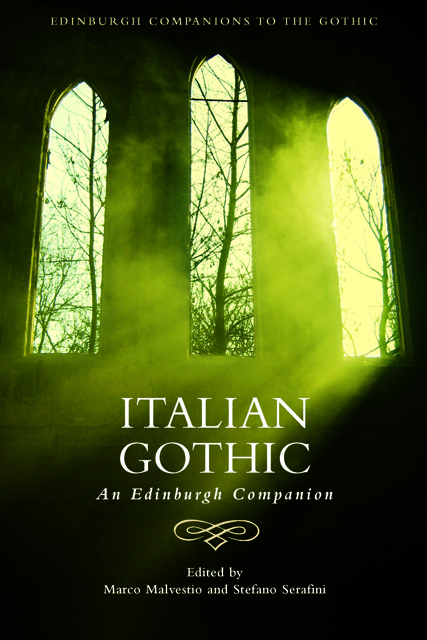2 - The Gothic and the Historical Novel: 1828–1860
Published online by Cambridge University Press: 20 October 2023
Summary
This chapter addresses the Gothic in Italian literature in the first half of the nineteenth century (between 1828 and 1860 in particular), before the Scapigliati welcomed the genre in their work in post-unification Italy and a widespread interest in both Gothic and fantastic literature was enhanced and testified by the circulation of foreign works by Edgar Allan Poe, Theophile Gautier, and E. T. A. Hoffmann, among others. Earlier in the century, as Fabio Camilletti shows in Chapter 1 of this volume, there was an ostensive lack of literary examples of the Gothic genre which had been spreading in Europe thanks to authors such as Horace Walpole, Ann Radcliffe, Matthew Lewis and Charles Maturin. And yet, several Italian literary texts from the 1820s and 1830s, without offering a fully fledged expression of the Gothic, still represent a significant, and to this day largely under-investigated, body of work. Among the authors who engage with this genre, four appear of particular interest: Giambattista Bazzoni, Diodata Saluzzo Roero, Cesare Balbo, and Francesco Domenico Guerrazzi. All significant figures in their own right, their narratives are informed by the rising interest in Italian history.
The famous expression used by Alessandro Manzoni to define, and dismiss, Gothic literature (‘un […] guazzabuglio di streghe, di spettri, un disordine sistematico, una ricerca stravagante, una abiura in termini del senso comune’ [a mishmash of witches and ghosts, a systematic disorder, a recherché extravagance, an abdication of common sense], from the 22 September 1823 so-called ‘Letter on Romanticism’ to the Marchese D’Azeglio, Lettere 344) has become paradigmatic of the widespread scepticism towards the role of imagination in the first half of the nineteenth century, scepticism which characterised the lively debate in the pages of Il Conciliatore at the dawn of Italian Romanticism. A revealing article, addressing Romantic poetry from the Orient (‘Poesia romantica dall’Oriente’), dated 26 November 1818, mocks its ‘bizzarre invenzioni’ [bizarre inventions] and deems ‘l’apparizione degli spettri dei morti’ [the apparition of the ghosts of the dead] to be among ‘le superstizioni del volgo’ [the superstitions of the common people] (97). In the often-quoted letter to Marco Coen (2 June 1832), Manzoni comes to distinguish between literature based on invention (imagination) and literature based on ‘invenimento’ [finding].
- Type
- Chapter
- Information
- Italian GothicAn Edinburgh Companion, pp. 30 - 47Publisher: Edinburgh University PressPrint publication year: 2023



